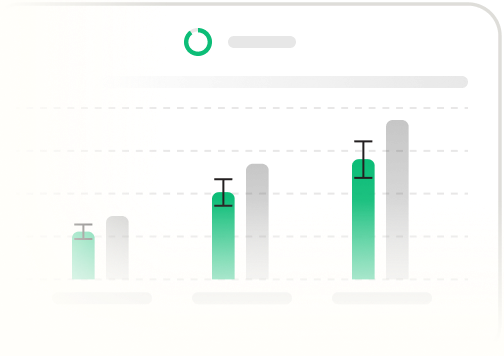- GHG / Emissions
Build inventories you can defend — and regulators can trust
Reconcile top-down and bottom-up data in one system, meet OGMP 2.0/EUMR, and publish disclosures regulators can verify — without spreadsheet chaos.
- GHG / Emissions
Build inventories you can defend — and regulators can trust
Reconcile top-down and bottom-up data in one system, meet OGMP 2.0/EUMR, and publish disclosures regulators can verify — without spreadsheet chaos.
- What you’re up against
Methane quantification isn’t a math problem — it’s a systems problem.
Inconsistent inputs across handheld, drone, satellite, and continuous monitoring tools.
Manual reconciliation leaves too much room for error — and too little confidence.
Regulatory expectations (OGMP 2.0, EUMR) are evolving faster than internal processes.
Auditors and ESG teams demand traceability — but data lives in silos.
How Highwood helps GHG / Emissions leaders

Platform
Standardizes emissions data inputs, enables integrated reconciliation workflows, and supports measurement-informed inventory (MII) protocols.

Consulting
Methodology guidance for OGMP 2.0 Level 4/5, EUMR readiness, and uncertainty modeling — built for audit-grade defensibility.

Education
Custom training for inventory teams on MII frameworks, data QA/QC, and scientific documentation practices.
What you gain
Audit-ready inventories
Documented assumptions, verified data sources, and clear uncertainty bands.
Measurement-driven accuracy
Use actual site data — not just emissions factors — to refine estimates.
Data harmonization
Integrate top-down and bottom-up inputs in one traceable system.
Cross-functional alignment
Enable consistent reporting across regulatory, ESG, and investor audiences.
Regulatory readiness
Stay aligned with OGMP, EUMR, and upcoming rules without constant fire drills.

- Executive Snapshot
“Get to Gold Standard with fewer headaches, and more time to focus on what matters.”
Director of Sustainability
- International Operator
- Frequently asked questions
Reconciling methane inventories with scientific rigor and regulatory precision
What’s the most defensible way to reconcile bottom-up inventories with top-down methane measurements?
The most trusted approaches use measurement-informed inventory (MII) frameworks with quantified uncertainty, timestamp alignment, and statistical reconciliation between emissions factors and site-specific observations.
How do OGMP 2.0 Level 4 and 5 protocols affect how I build and validate my inventory?
These levels require site-level data, source attribution, and integration of measurement campaigns — shifting away from simple emissions factors toward continuous or campaign-based quantification with rigorous QA/QC.
What are common sources of uncertainty in methane inventory calculations — and how do I quantify them?
Variability in emission factors, temporal mismatches, detection thresholds, and atmospheric conditions all contribute. Use Monte Carlo simulations or similar techniques to bound confidence intervals.
How should I structure my inventory to comply with both OGMP and EU Methane Regulation (EUMR)?
Align site-level measurement data with source categories, ensure traceability across detection methods, and prepare defensible documentation on method selection and reconciliation logic.
What’s the best way to manage multiple datasets from handheld, drone, satellite, and continuous monitors?
Standardize inputs via a normalized data model, align measurement timestamps, and apply sensor fusion techniques to prevent data silos and cross-contamination.
How do I know when measurement data should replace default emissions factors in my inventory?
Apply thresholds based on data quality, temporal coverage, and representativeness. Measurement data can displace factors if uncertainty is reduced and documentation supports defensibility.
What are best practices for integrating third-party measurements into our corporate GHG accounting process?
Require method transparency, timestamp and location metadata, and verification protocols. Document how third-party data was reconciled and incorporated, especially if used in public disclosures.
How do I structure a QA/QC process for emissions data that meets audit and investor standards?
Create traceable workflows with log files, versioned inputs, sensor calibration records, and reconciliation steps. Independent validation strengthens credibility.
What metrics or KPIs should I track to evaluate inventory accuracy and improvement over time?
Track uncertainty bands, data completeness scores, percentage of inventory supported by measurements, and reconciliation delta between predicted and observed values.
How do I explain methane inventory updates or revisions to internal stakeholders and regulators?
Anchor explanations in method changes, updated measurement campaigns, or improved uncertainty modeling — and show version comparisons with rationale and impact quantification.


- Featured
Highwood Insight

- SOLUTION BRIEF
Methane reconciliation is complex and critical
Why OGMP 2.0 Level 5 reconciliation is harder than it looks — and how to get it right.
- Get started


